Shape in art is not just a simple outline or form; it is a fundamental element that brings life and innovation to artistic compositions.
In the realm of art, shape refers to the two-dimensional area created by lines, colors, and textures.
It is the foundation upon which an artist builds their composition, allowing them to convey meaning, emotions, and ideas.
Shapes can be geometric or organic, simple or complex, and can range from circles and squares to abstract and amorphous forms.
By manipulating shapes, artists can create depth, movement, and balance, leading the viewer’s eye on a visual journey.
Table Of Contents
Key Takeaways
- Shape refers to the two-dimensional outline of an object, while form refers to its three-dimensional structure.
- Different types of shapes include organic shapes found in nature and geometric shapes that are precise and regular.
- Combining organic and geometric shapes can create dynamic and visually stimulating artwork.
- Geometric shapes convey order, stability, and control, while organic shapes represent the unpredictability and fluidity of the natural world.
What is Shape In Art?

Shape in art is like puzzle pieces that fit together perfectly to form a beautiful picture, allowing you to feel a sense of completeness and satisfaction.
It is one of the fundamental elements of art, along with line, color, form, value, texture, and space.
Shape refers to the two-dimensional area created by the boundaries of an object or figure. There are different types of shapes in art, such as organic shapes and geometric shapes.
Organic shapes are irregular and often found in nature, like the shape of a leaf or a cloud.
They’re free-flowing and lack defined edges or angles.
On the other hand, geometric shapes are precise and composed of straight lines and angles.
These shapes, such as squares, circles, and triangles, are often seen in man-made objects and architecture.
In addition to these types, there are also positive and negative shapes. Positive shapes are the actual objects or figures in a composition, while negative shapes are the spaces surrounding and between these objects.
Both positive and negative shapes play an important role in creating balance, harmony, and visual interest in a work of art.
By manipulating and arranging these shapes, artists can create dynamic compositions that evoke emotions, convey meaning, and captivate the viewer.
But let’s go over each one in more detail!
Types Of Shapes
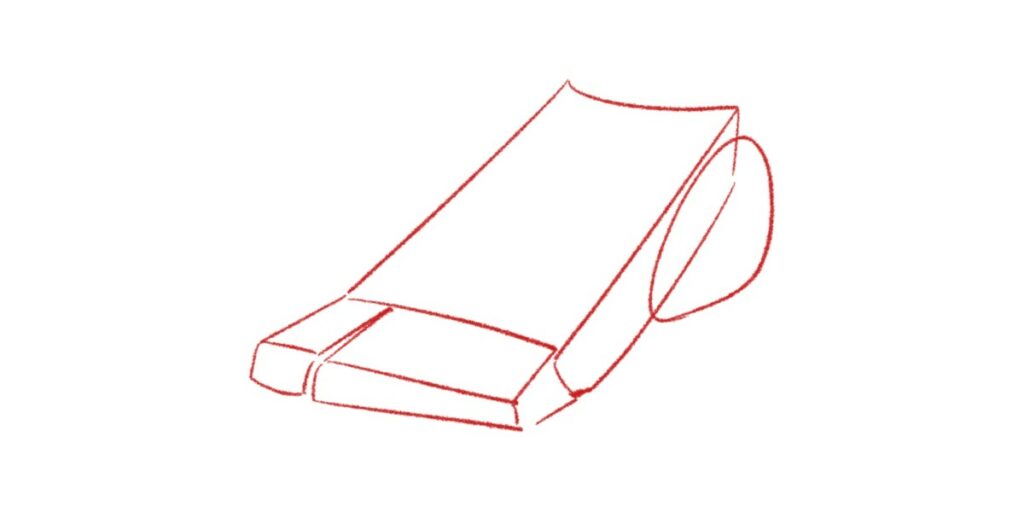
In this discussion, we’ll explore two types of shapes commonly seen in art: geometric shapes and organic shapes.
Geometric shapes are precise, regular forms that are often man-made, such as squares, circles, and triangles.
On the other hand, organic shapes are irregular and free-flowing, resembling objects found in nature, like leaves, clouds, and rocks.
By understanding the characteristics and uses of these different types of shapes, you’ll create better art and compositions.
So let’s go over these different types of shapes!
Geometric Shapes
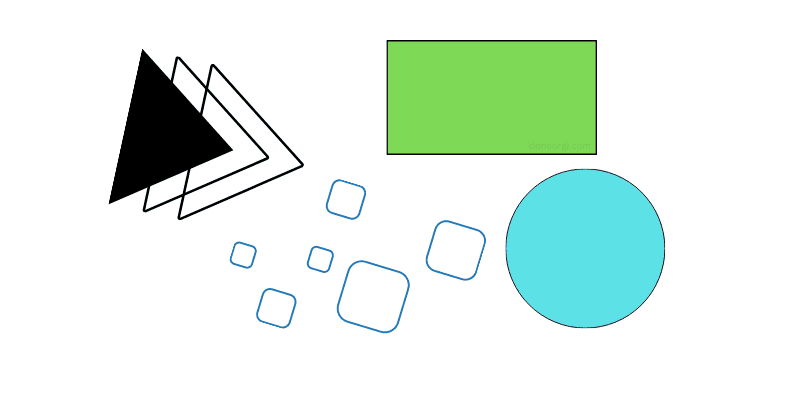
Geometric shapes, such as the rectangle and triangle, are fundamental elements in art that can add a sense of balance and harmony to your compositions.
These shapes are characterized by their precise measurements and symmetrical proportions, giving them a sense of stability and order.
In the realm of art, geometric shapes can be classified into two categories: two-dimensional and three-dimensional.
Two-dimensional geometric shapes, like squares and circles, are flat and have only length and width.
They can create a sense of simplicity and minimalism in your artwork.
On the other hand, three-dimensional geometric shapes, such as cubes and pyramids, have depth in addition to length and width.
These shapes can add a sense of volume and depth to your compositions, making them visually engaging and dynamic.
Incorporating geometric shapes into your art can also create a striking contrast when paired with organic shapes.
Since they are so different from each other, geometric and organic shapes can make a very interesting composition.
Organic Shapes
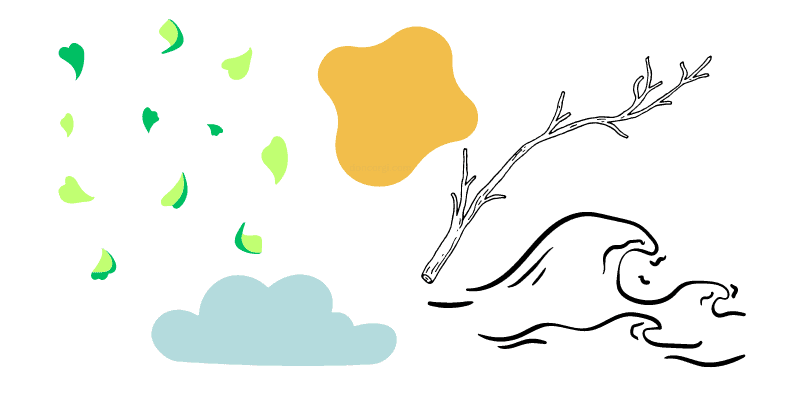
Unlike geometric shapes that are defined by precise lines and angles, organic shapes are more free-flowing and unpredictable.
They can be found in nature, such as the irregular curves of a tree branch or the contours of a flower petal.
In art, organic shapes can be created by using your imagination to depict amorphous and natural shapes that don’t conform to the rigid boundaries of basic shapes like squares or circles.
Organic shapes add a sense of dynamism and movement to artworks, as they often appear to be in a state of flux.
Their irregularity and lack of symmetry can create a visual tension that draws the viewer’s attention and keeps them engaged.
These shapes have a certain softness and subtlety that can evoke emotions and convey a sense of natural beauty.
Positive and Negative Shapes
When we think of shapes in art, we often focus on the objects and figures that are created.
However, positive shapes represent the objects themselves, while negative shapes are the spaces around and between those objects.
By paying attention to the shapes created by the negative space, artists can enhance the overall visual impact of their artwork.
The interplay between positive and negative shapes can create a sense of tension, balance, or movement, adding depth and complexity to the artwork.
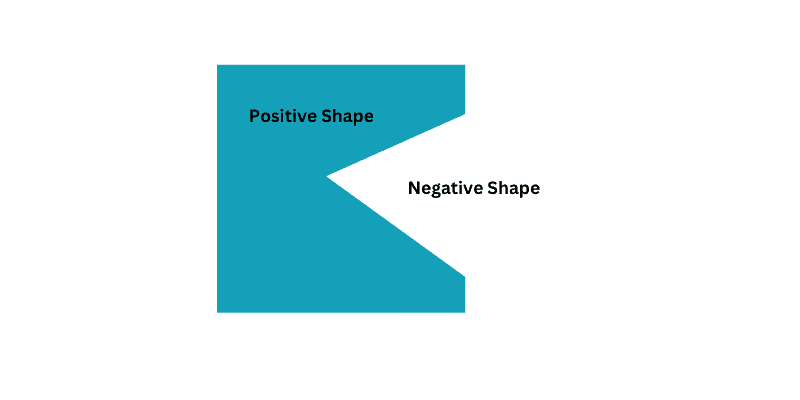
For example, in a painting of a square, the square itself would be the positive shape, while the empty space around it becomes the negative shape.
Both types of shapes play a vital role in the overall composition of a piece.
You can find more about negative space in art (with examples) here!
Understanding the importance of shape in art allows artists to create innovative and captivating pieces.
By experimenting with different types of shapes and utilizing the negative space, artists can push the boundaries of traditional art and create visually stimulating compositions.
Role Of Shape in Composition
Imagine standing in a lush meadow, surrounded by the vibrant colors of flowers and grasses, their shapes gently swaying in the breeze, guiding your eye towards a distant mountain peak.
Shapes play a crucial role in creating a visually captivating composition. By using various types of shapes, artists can manipulate the viewer’s perception and evoke specific emotions.
Using shape correctly can give many key aspects to your composition:
- Visual Hierarchy: Establish a visual hierarchy with shape. For example, large and bold shapes to grab the viewer’s attention, with smaller shapes receding into the background. Artists can also use light and dark shapes to create that hierarchy.
- Symmetry And Balance: Create stability in your artwork, especially by using geometric shapes correctly. You can also create asymmetry or deliberately disrupt the equilibrium to create an interesting, chaotic effect!
- Cohesion and Visual Unity: Unity is one of the 7 principles of art, and by working with similar and related shapes, you can create visual coherence and interest.
Not only that, but artists in modern art often experiment with abstract shapes in their composition, pushing the boundaries of traditional representation.
These shapes can be highly subjective and open to interpretation, allowing the viewer to engage with the artwork on a more personal level.
For instance, artists like Wassily Kandinsky and Piet Mondrian incorporated abstract shapes in their work, aiming to express emotions and spiritual concepts through non-representational forms.
You can find amazing uses of shapes in abstract art, which we’ll cover some examples in this article.
Drawing with Shapes
Now that you understand the role of shape in composition let’s delve into the basics of drawing with shapes.
Drawing with shapes is a fundamental technique used in art to create representational or abstract images.
By breaking down objects or ideas into their basic geometric or organic shapes, artists can manipulate positive and negative space to convey their intended message.
This technique allows artists to explore the relationship between two and three-dimensional forms, giving depth and dimension to their artwork.
Shapes and forms are the building blocks of any artwork, and drawing with shapes allows artists to create a strong foundation for their compositions.

Whether using squares, circles, triangles, or more complex organic shapes, artists can arrange and combine these elements to create dynamic and visually engaging artworks.
By playing with the size, position, and orientation of these shapes, artists can create a sense of movement, balance, and harmony within their compositions.
Furthermore, drawing with shapes also opens up possibilities for exploring the world of abstraction.
Artists can experiment with distorting and transforming shapes to create unique and innovative artworks that challenge the viewer’s perception.
This approach allows artists to break away from strict representation, pushing the boundaries of traditional art and giving rise to new forms of visual expression.
Shapes in Nature
In the natural world, the intricate patterns of leaves, the graceful curves of seashells, and the irregular contours of mountains all demonstrate the myriad ways shapes manifest in nature.
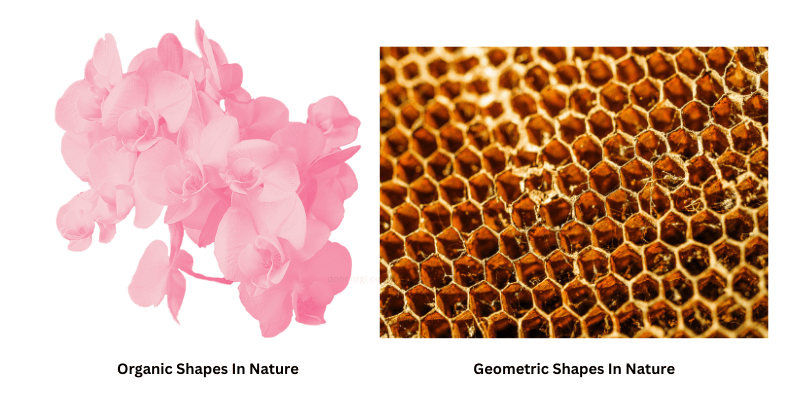
Organic shapes, characterized by their flowing and irregular forms, can be observed in the delicate petals of a flower or the winding branches of a tree.
These shapes are often associated with the unpredictability and beauty found in the natural environment.
On the other hand, geometric shapes can also be found in nature, providing a contrast to the organic shapes.
From the hexagonal cells of a honeycomb to the symmetrical patterns of a snowflake, nature showcases the fundamental structure and mathematical precision inherent in geometric shapes.
These shapes often exhibit a sense of order and balance, contrasting with the more free-flowing organic shapes.
Understanding the shapes found in nature not only allows us to appreciate the beauty of the world around us but also provides a foundation for artistic exploration and innovation.
Shapes in Art History
In the early 20th century, the De Stijl movement, led by artists such as Piet Mondrian, sought to simplify and abstract the natural world into its basic geometric forms.
By reducing nature to its essential shapes, artists aimed to capture its underlying harmony and universal principles.
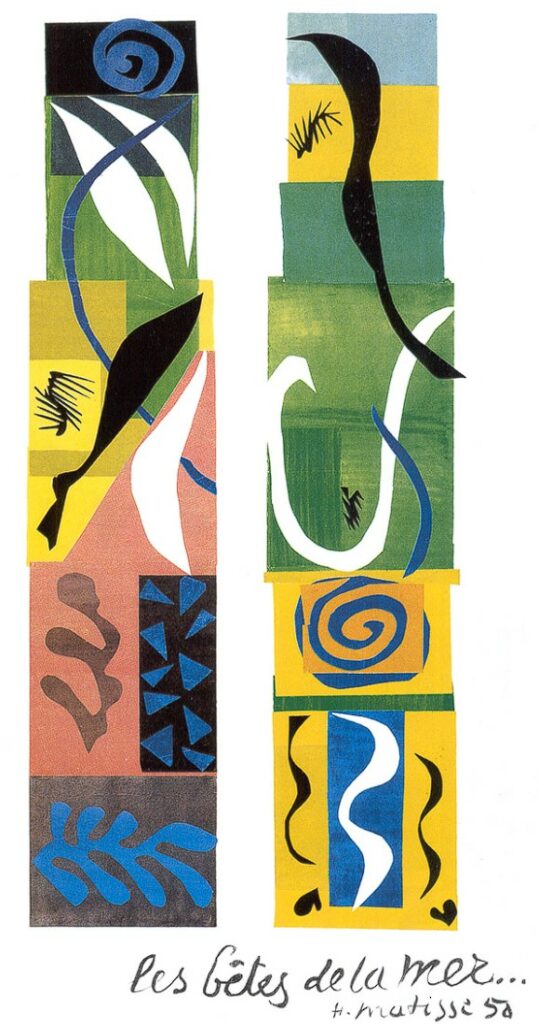
For example, Henri Matisse, a renowned artist in the early 20th century, frequently incorporated biomorphic shapes in his paintings.
His vibrant and dynamic compositions showcased the beauty and complexity of organic shapes, creating a visual language that resonated with viewers.
In addition to biomorphic shapes, artists also explore the realm of three-dimensional forms in art and design. By manipulating shapes in space, artists can create sculptures that engage the viewer from multiple angles.
This adds a sense of depth and physicality to the artwork, allowing the audience to interact with it in a more tactile way.

For example, Constantin Brancusi (1876-1957), a Romanian sculptor, is very well known for his simplified shapes that have a very spiritual and symbolic essence.
Geometric shapes, such as squares, circles, and triangles, are often used in three-dimensional art to create structure and balance.
These shapes provide a sense of order and precision, contrasting with the organic shapes mentioned earlier.
Famous Shape Art Examples
Let’s now look at some examples of shape in art.
Here are some famous artists that have used shape remarkably in their artworks.
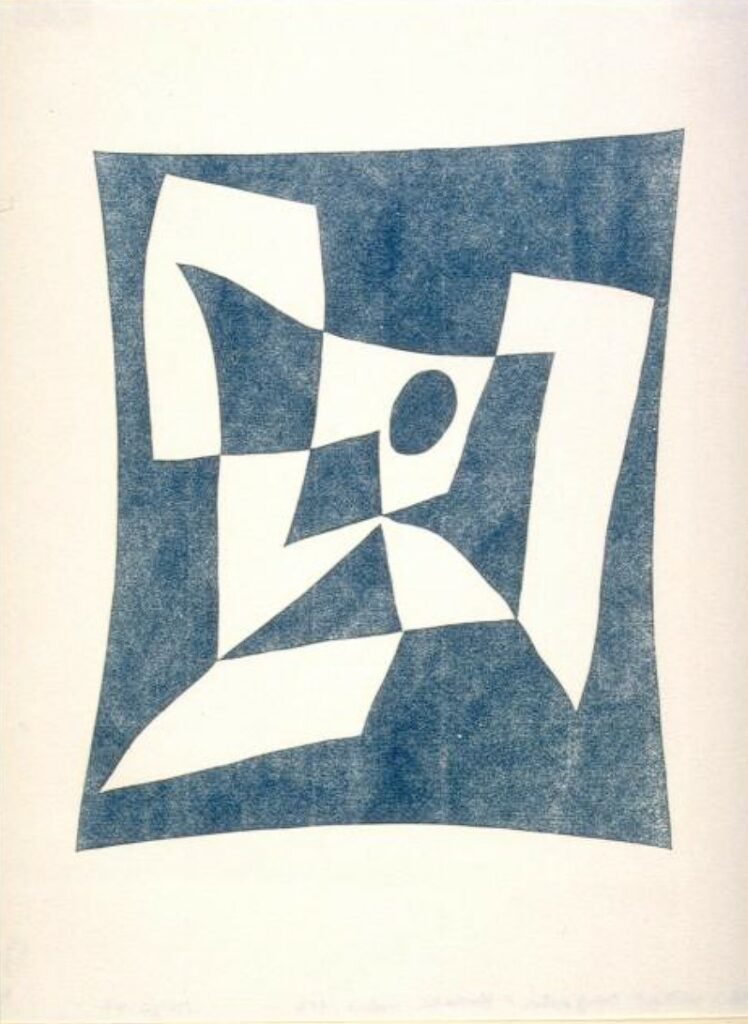
One famous example of shape art is the work of Jean Arp, a pioneer of biomorphic shapes. Arp’s sculptures and paintings often feature abstract shapes that resemble organic forms found in nature.
His use of biomorphic shapes creates a sense of movement and fluidity, inviting viewers to explore the three-dimensional space of his artwork.
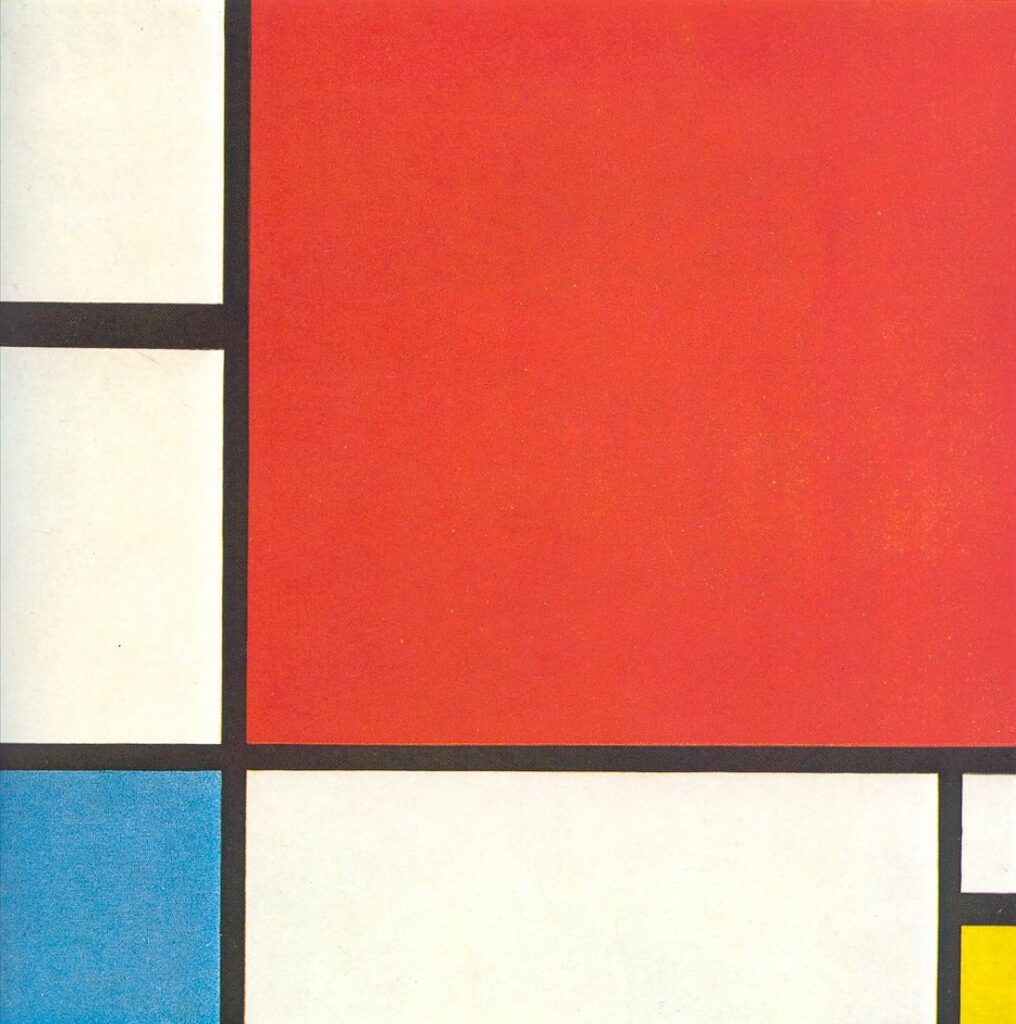
Another notable artist who experimented with shapes is Piet Mondrian.
Mondrian’s iconic compositions are characterized by the use of geometric shapes, particularly squares and rectangles. His paintings, such as ‘Composition with Red, Blue, and Yellow,’ are composed of bold, primary colors and precise lines that intersect to create a sense of balance and harmony.
Mondrian’s exploration of geometric shapes reflects his belief in the universal principles of harmony and order.
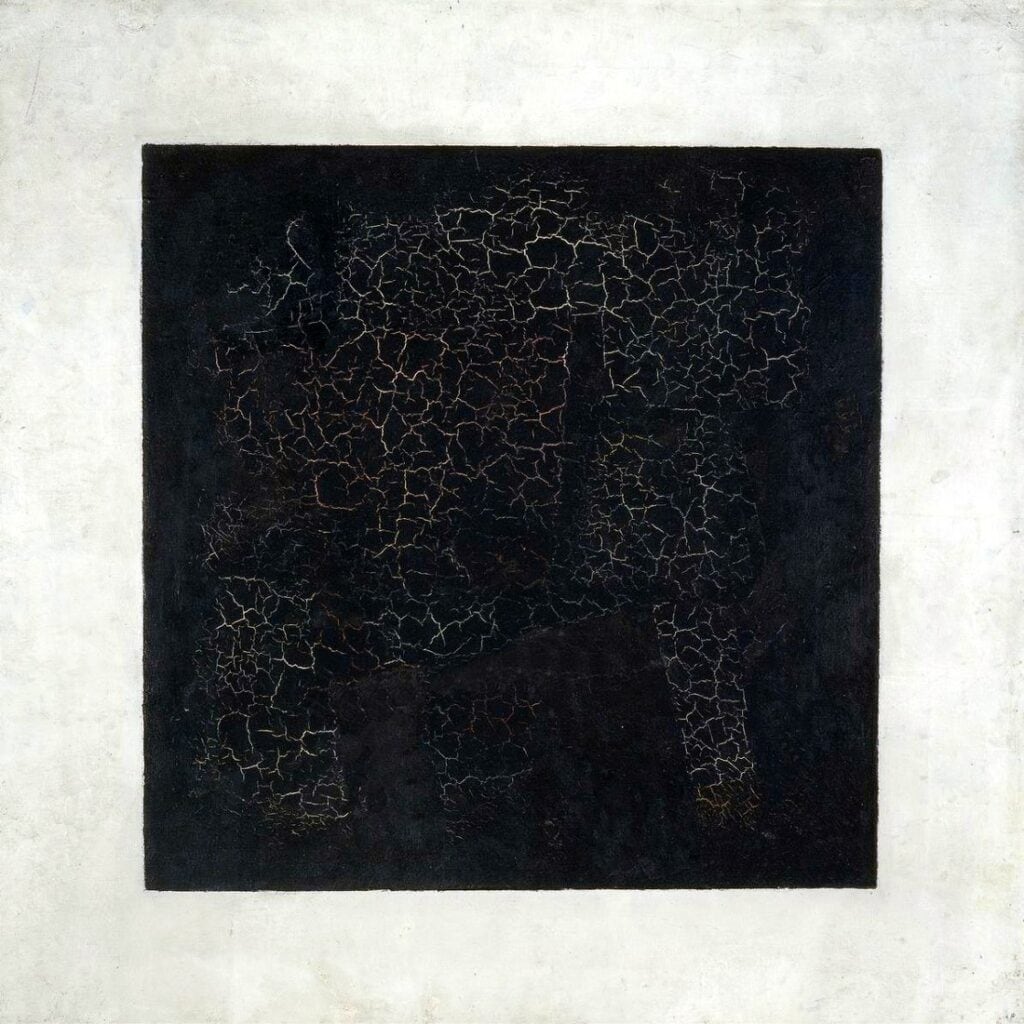
The artist Kazimir Malevich, during the early 20th-century Russian art movement called Suprematism, created art pieces such as the “Black Square”.
This artwork embraces pure abstraction, and according to the artist, it symbolizes the “zero degree” of art.

Andy Warhol’s ‘Campbell’s Soup Cans‘ is an iconic Pop Art series that showcases the artist’s fascination with the mundane and consumer culture.
The artwork consists of individual cans of soup, each represented as a distinct shape.
Warhol’s repetitive use of shapes creates a visually captivating composition, highlighting the mass-produced nature of the objects.
Related Questions
Let’s now go over a few questions related to how shape is created, the differences between different kinds of shapes, and more!
What Is The Difference Between Form And Shape?
Explore the distinction between form and shape, so you can better appreciate the depth and dimension in art.
In the world of art, form and shape are two fundamental concepts that play a significant role in creating visual interest and conveying meaning.
While both terms are closely related, they have distinct characteristics that set them apart.

The difference between form and shape is that shape refers to the two-dimensional outline or contour of an object, while form refers to the three-dimensional structure or mass of an object or figure.
Understanding the difference between these concepts allows artists to effectively manipulate space and create a greater sense of depth in their artworks.
What Are The 5 Basic Shapes In Sketching And Art?
The 5 basic shapes in sketching are:
- Squares
- Rectangles
- Triangles
- Circles
- Ellipses
These five different shapes can serve as a starting point to build more complex shapes, such as polygons and 3D shapes.
What Is The Difference Between Geometric And Organic Shapes?
Now that you understand the difference between form and shape, let’s delve deeper into the world of shapes in art.
One important distinction to make is between geometric shapes and organic shapes.
The difference between geometric and organic shapes is that geometric shapes are precise and symmetrical, often defined by straight lines and angles. Think of squares, circles, triangles, and rectangles. On the other hand, organic shapes are freeform and irregular, resembling objects found in nature like leaves, clouds, or rocks.
By understanding the difference between these two types of shapes, artists can create a vast array of visual compositions that evoke different emotions and meanings.
So, why is it important to distinguish between geometric and organic shapes in art? Here are three reasons:
- Expressing order and structure: Geometric shapes are often associated with order, stability, and control. They can convey a sense of balance and harmony in a composition. On the other hand, organic shapes can represent the unpredictability and fluidity of the natural world, evoking a sense of movement and vitality.
- Conveying emotions and meanings: Different shapes can evoke different emotions and convey various meanings. Geometric shapes, with their sharp edges and defined boundaries, can create a sense of precision and professionalism. On the other hand, organic shapes, with their flowing lines and irregular forms, can evoke feelings of freedom, relaxation, or even chaos.
- Creating visual interest: By combining geometric and organic shapes, artists can create visual interest and dynamic compositions. The contrast between the precision of geometric shapes and the fluidity of organic shapes can draw the viewer’s attention and create a visually engaging experience.
Understanding the difference between geometric and organic shapes allows artists to manipulate the visual language of their artwork, creating compositions that are visually appealing and conceptually meaningful.
And that’s it about using shape in art! You can read about the 7 elements of art here.
How about checking out Texture In Art next?
Patricia Caldeira is the main writer here at Don Corgi. She's an art teacher with over 20.000 happy students across many platforms and courses!
Enjoy your stay and as always:
Keep on drawing!



